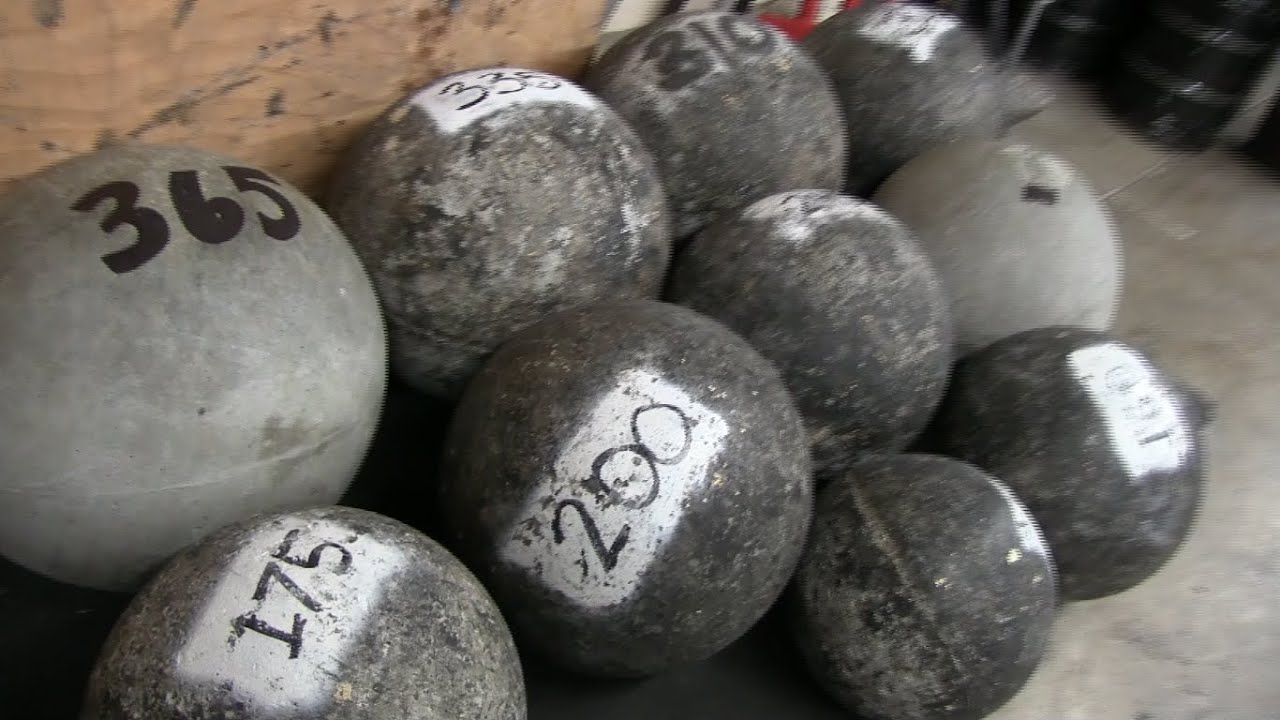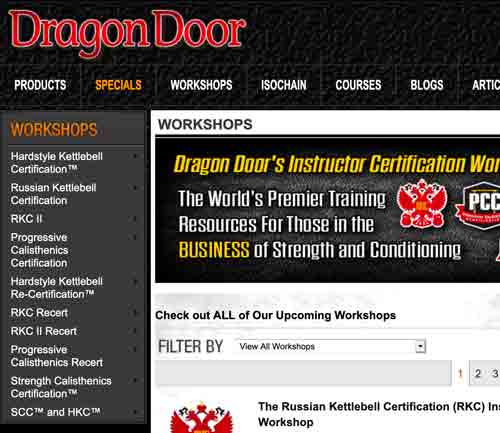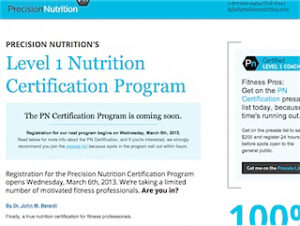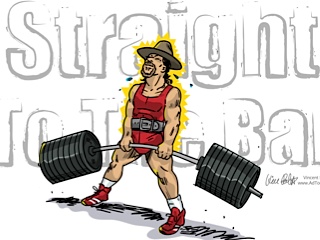Now that we have an understanding of some of the quality implements out there that we can use to train to lift the Inch Replica Dumbbell, we need to think about how we can use them to make sure we get the most out of them in our time training with them. The following tactics can be used for a thick loadable dumbbell or a Rolling Thunder Revolving Deadlift Handle, both of which I covered in my previous article.
Max Attempts
Probably one of the simplest strategies for trying to work your way toward lifting the Inch is Max Attempts. This involves loading the implements up with a poundage that is close to the 1 RM (one repetition maximum), or the heaviest weight you can perform for a full repetition.
I like this method because I can monitor my progress well with it. If every week you are able to add weight to the implement, then your grip is getting stronger with that implement and eventually you will be strong enough to lift the Inch Dumbbell, especially if the implement you are training with closely resembles the shape, handle size, handle texture, and grip-ripping action that the Inch Dumbbell has.
While you may see gains every single week at the beginning of a program, it is probably more realistic to expect to see some weeks where you improve, others where you stay the same, and still others where you are not able to lift as much as you have lifted previously. Grip training is just like any other type of lifting. Depending on your current health, nutritional state, level of rest and recuperation and other factors, you will feel and perform differently on any given day.
The important thing to remember is when you are feeling good, strive for the PR, or personal record. But if you are not feeling it that day, don’t just give up. I think the effort that you are willing to put forth on your weaker training days is what makes the difference in the end. If I stopped my gripping routine every time I realized that my hands weren’t feeling the best, I would almost never do a full grip routine. Since I train grip 4 or 5 times a week, my hands rarely feel fresh. I have to force the blood into my hands sometimes to get them to warm up. I have to work thick bar the day after I just worked pinch, so my thumbs often feel weary and feeble. I have to give myself deep-tissue massage in between sets to keep the muscles from cramping up. I know that my hands are just not going to feel well sometimes, but I also know the time I put in on those days is what is going to get me to first place at a contest or is going to get me that next gripper certification, or next completed feat of strength.
When you are feeling good, take advantage of it and try to tack on more weight. Go for the heaviest possible weight you can pull. This may mean you will have to try micro-loading.
Micro-loading is where you add small weights to the implement, weights that might weigh only a pound or so. Most of the time, the smallest weight a gym will have is a 2.5 pound plate (in the U.S.) but there are companies that sell smaller plates. A consistent supporter of the Gripboard, PDA sells Fractional Plates .Click to read more about what they offer.
Fractional plates allow you to work toward making finer gains. Instead of having to jump up 5 pounds by throwing a 2.5 on each side, you can put a 1-pounder on each side and go for a 2-pound PR!
When I want to micro-load, I sometimes use magnets. The magnets I use are called cow magnets. As some of you may know, cows will try to eat just about everything. They wander around the pasture gobbling up grass, but also end up chewing up pieces of metal. Coat hangers, bolts, screws, nuts and other strange pieces of metal have been found in the stomachs of cows, so some farmers purposely feed them magnets in order to attract the shavings from these pieces of metal in their stomachs. These magnets weigh a little more than a pound apiece and work great for micro-loading. I place one on each side of the dumbbell and lift!
Repetitions
You can build the endurance in yours hands by performing repetitions with your thick-handle implements. I will discuss two different ways to do this.
Slow Method
In order to consistently pull big weights, you must work near your 1 RM (One Repetition Maximum) and pull them over and over. Due to the nature of the weights being attempted, the pulls are going to be slow, almost a grinding pace, and that is why this is called the Slow Method.
This method involves placing as secure of a grip as possible on the implement prior to lifting. You should be very deliberate about how you place your hand and make sure it is in the optimal position every time. Take your time, get your grip right and perform good, full repetitions.
When I use this technique, I know I am doing it right when my entire hand feels worn out – fingers, thumb, palm and wrist. I stretch my hand around the handle and grip as tight as I can. I pretend my hands are like eagle talons trying to snap through a branch, and then pull until I can perform no more repetitions. Once I hit that point, I switch hands. Usually when I set the implement down, my grip has slipped a bit, or the contact with the floor has shaken the implement loose, so after I set the implement down, I normally take my hand off and the re-set my grip.
Quick Method
It’s fundamental that if you constantly work close to your 1 RM, that you can burn yourself out, and possibly cause injury, so I also incorporate a quicker form of repetition method in my thick bar training.
With the quick method, the grip you apply is not going to be optimal. Instead of setting your grip on the implement with care and detail, you will just bend down and pull it the instant you contact the gripping surface.
This method is very ballistic in nature and teaches you to initiate as much of your strength as possible on the implement in a very short time span.
When I train with this technique, I feel it most in my finger tips and in the thumb. I think the reason for this is because I am not able to apply my calculated hand-wrapping technique and thus the weakest areas of the hand (fingertips & thumb) end up doing the most work to keep the dumbbell from slipping out of the grasp. After several sets, my hands are worn out.
You may notice that these techniques I am describing resemble the training techniques that Louie Simmons at Westside Barbell and Dave Tate and Jim Wendler of EliteFTS.com have developed and made famous for success in Powerlifitng. The techniques work for grip training, too. Varying the speed and load of the same or similar movements causes you to build more well-rounded strength, and that will help you build the strength needed to lift tremendous weights in a given type of lift. It really doesn’t matter if you are training a full body lift like the squat, or a lift that is more specialized to a given part of the body, like grip strength training.
I suggest working the slow method for three or four work sets of 2 or 3 repetitions. If you end up getting any more than 3 reps per set, the weight is too light and you should move the weight up, possibly with micro-loading.
With the Quick Method, you can work in the 3 to 5 rep range for 3 or 4 work sets. Make sure that you are moving the implement with blazing speed. Speed is the key here, as you want to train your hands to fire rapidly. This may mean dropping the load substantially. If the Loadable Dumbbell or Rolling Thunder starts slowing down, drop the weight even more.
I encourage you to try these techniques. Speed work is something that often gets neglected in the Grip routine.
Now that we have discussed varying the speed on your repetitions, next time we’ll look at varying the distance we pull.
In the meantime check out DieselCrew.com and Napalm’s Corner for more articles and videos on developing Grip Strength.
Also in this series :











0 Comments